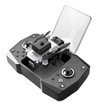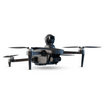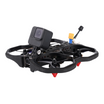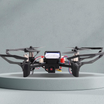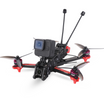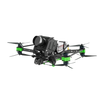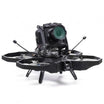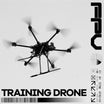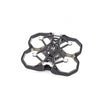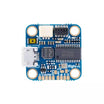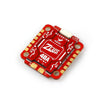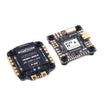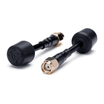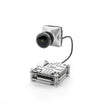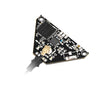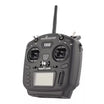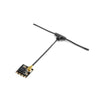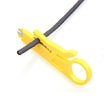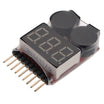Drones have rapidly progressed far beyond their initial novelty stages becoming versatile intelligent platforms empowering a spectrum of commercial to recreational use cases. Yet truly transformative potential emerges incorporating artificial intelligence (AI) advancing robotic systems from automated to autonomous operations. AI-equipped drones stand poised to revolutionise applications from infrastructure inspection and delivery services to agriculture management and public safety coordination over the coming decade.
In this blog we’ll explore the current state and future trajectory of AI integration in unmanned aerial vehicles (UAVs). We’ll look at how machine learning algorithms elevate drone capabilities, preview some early advanced implementations and consider what a future looks like with AI-enabled UAVs coordinating en masse. We’ll also highlight insideFPV’s own development roadmap ambitions to equip drones with unprecedented intelligence using neural networks trained across millions of specialised aerial datasets. The result promises autonomous flight functionality unlike anything seen today. Let’s dive in!
Welcome to the Drone Age
Before surveying how AI might shape their future, first let’s recap drones’ blistering market growth over the past decade defining their mainstream breakout.
Modern quadcopter popularity traces back to DJI introducing the first ready-to-fly premium camera drone, Phantom 1 for consumers in 2013 priced under $1000. Rapid market proliferation soon followed as costs lowered and performance soared exponentially thanks to:
- Improving Technology - More efficient motors, aerodynamic materials, smarter sensors and processing chips expanded flight times and agility.
- Enhanced User Friendliness - Refined radio controllers, gimbal-stabilised 4K cameras and intuitive apps lower barriers appealing to non-hobbyist users.
- Favourable Regulations - Relaxed aviation authority commercial policies increase lawful applications spanning surveys, security/emergency response and infrastructure oversight etc.
AI Sets the Stage for Autonomy
Artificial intelligence stands poised to accelerate drone capabilities dramatically across areas including:
Enhanced Machine Vision & Scene Analysis – Onboard cameras currently only see minute image snippets lacking broader context. AI equips UAVs to interpret dynamic outdoor environments more intelligently using neural networks classifying objects and motion vectors surrounding flight paths in real time. This spatial awareness safeguards navigation.
Automated Flight Planning - Rather than just following fixed scripted missions, AI allows drones to reroute themselves reacting to unexpected scenarios like weather, traffic or no fly zones using probabilistic reasoning updating optimal paths dynamically.
Swarm Fleet Coordination – Individual drones have limited scope, but groups collaborating complexity solve problems. AI facilitates intricate choreography of vast drone teams mobilising collectively for large scale tasks like coordinated crop health analysis and emergency response.
Predictive Maintenance – Deep machine learning algorithms can analyse system telemetry preemptively diagnosing hardware degradation or catching component issues before outright failure through pattern recognition across lengthy operational lifetime datasets. This maximises field readiness.
Smart Video/Image Analytics - Human operators manually sifting drone captured imagery/video struggle finding insights. AI managed automated analysis quickly filters noise detecting scene segments warranting attention, tagging moments of interest and compiling shareable visual summaries.
These capabilities require extensive software innovations before realisation but promising in-roads already emerge as AI redefines drone flight ceilings.
Pioneering Implementations
While AI drone autonomy still remains largely theoretical and confined to laboratory settings presently, early innovative applications already enter commercial testing and active duty across industries like:
Infrastructure/Energy Assessment – Sensing drones automatically scan expansive assets like cellular towers, pipelines, wind turbines etc. using computer vision and deep learning to identify structural defects, model wear deterioration rates and guide predictive maintenance scheduling.
First Response Mobilization – AI directs autonomous drone fleets to emergencies plotting optimal search patterns while intelligently covering maximum ground assessing damage scales and locating trapped victims faster than emergency coordinators alone. Teams also self coordinate to maintain real time shared situational awareness.
Agriculture Management - Specialized image recognition algorithms reliably detect crop stress and precisely target irrigation, fertilisers, pesticides where foliage requires leveraging multispectral aerial data vs imprecise blanket applications wasting resources.
Last Mile Delivery - Light payload drones connect inventory systems to navigate optimised delivery routes autonomously. Early stage trials show immense promise although scaling infrastructure remains challenging amid crowded metropolis environments.
Autonomous Inspection & Security - Always patrolling camera drones running complex recognition neural networks identify abnormalities like trespassers, smoke/spills triggering alerts immediately while continuing monitoring sites independently 24/7 without relying on exhausted human operators endlessly.
These early promising implementations represent merely initial breakthrough steps as computing power and developmental expertise accelerates. But they confirm artificially intelligent software fundamentally elevates drones from automated gadgets into responsive adaptive assistants.
The Path to Full Autonomy
Experts project AI proliferation reaching incredible sophistication by 2030. But UAV flight still faces core barriers to overcome first including:
Algorithmic Advancements – Existing machine learning models remain brittle. Mastering generalisation across vastly diverse outdoor unknowns requires expanded training datasets and novel neural network architectures built ground up for aerial capabilities.
Regulatory Alignment – Common operating standards must emerge around autonomous systems coordinating beyond line of sight reliably sans constant human monitoring before aviation agencies permit advanced operations at scale across cities.
Infrastructure Readiness – Expanded ground sensor networks, embedded data networks with 5G/6G and geo-fenced UAV highways provide the connectivity and positional foundations enabling intricate traffic management essential for prolific drone fleets.
Public Acceptance - Societal opinions around autonomous drones remain split regarding safety, privacy and job automation concerns which could stall mainstream adoption without thoughtful governance and educational initiatives addressing transparency and accountable development.
Thankfully an accelerating pace of global investments, research initiatives and field testing programs aim to overcome these barriers within the next five years. Leaders like insideFPV also dedicate resources spearheading critical R&D.
InsideFPV’s Ambitious AI Flight Roadmap
While cautiously optimistic about autonomy promises industry-wide, the insideFPV team sees unprecedented potential in AI algorithms trained leveraging our unique in-house flight datasets. Our proprietary drones logged millions of test hours across years recording orientation, vibration, power consumption, control inputs and visual feeds logged at microsecond fidelity.
No public benchmark drone dataset comes close to this degree of granularity and size, nor focuses on FPV dynamics extensively. Feeding these rich labelled samples into customised convolutional neural networks lets us build reactive autonomy surpassing any academic or commercial efforts reliant upon synthetic simulations or mundane third party data gathering.
We currently experiment assessing feasibility delivering premium user experiences merging automation with augmented intuitive controls rather than pursuing full autonomy immediately. Priority capabilities under development include:
Environmental Object Identification & Avoidance – Our drones can recognize common birds/wildlife, smoke plumes, neighbourhood structures mid-flight beyond basic obstacle avoidance using onboard machine learning classification directed at key objects of interest for pilots. This prevents collisions despite direct manual flight.
Intelligent Pilot Assist Modes – AI will provide trajectory and orientation corrections keeping insideFPV drones stable, legal and safe within complex routes accounting for scene conditions pilot goggle views might miss. Feedforward commands also help pilots lead subjects maintaining smooth video framing predictively.
Automated Safety Return Homing - In loss of signal or battery drain events, drones enter self recovery making context aware decisions navigating back safely rather than passive crashing.
Enhanced Media Auto-Editing - Our quads automatically tag and compile highlight reels by detecting visual excitement levels mid session using learned data labels we provide ranking user footage. Pilots then easily share polished action sizzles!
This Foresight architecture forms the bedrock enabling countless trailblazing Video Information Capture applications ahead we envision nonprofit and commercial partners leveraging towards research, security and emergency response innovations securing lives and progress globally. Our team remains committed to advancing drone capabilities maximising benefit for humanity.

